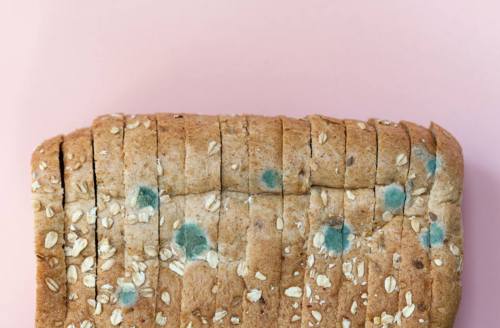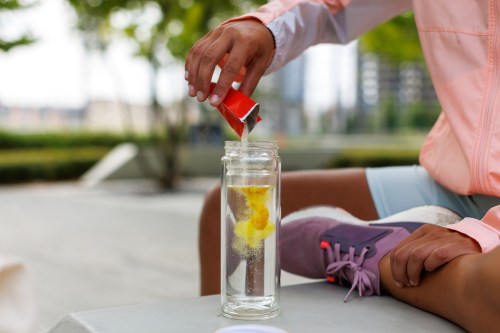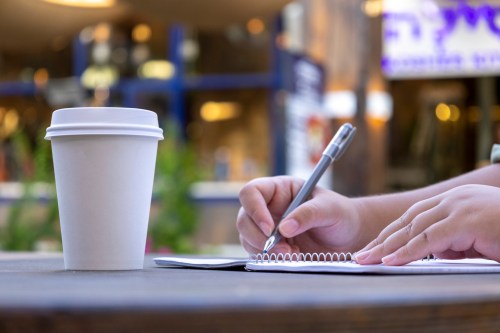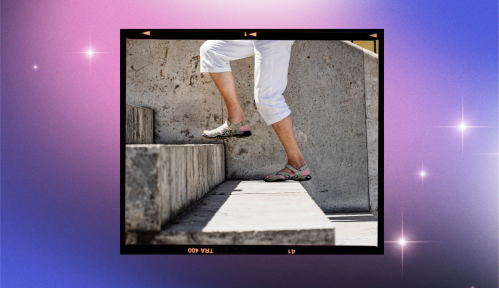Our editors independently select these products. Making a purchase through our links may earn Well+Good a commission
What Happens if You Eat Moldy Bread? Here’s How To Safely Handle the Inevitable Bite (Without Turning Blue)
Learn what happens if you eat moldy bread and the potential health risks, symptoms, and concerns if you do.

Buying a life-giving loaf of bread—like those deliciously seedy sprouted options or ones packed with sourdough benefits—is always a great idea. Many types of bread are loaded with good-for-you ingredients that up your daily protein intake and help feed your gut with tons of fiber.
Experts in This Article
creator of The Clever Carrot and author of Sourdough Made Simple
New York-based registered dietitian
The only problem? Since fresh bread contains fewer preservatives than the sliced Wonderwhatever-style loaves you find in supermarket, they don’t tend to last as long—and accidentally taking a big ol’ bite of a PB&M sandwich (you know, peanut butter and mold) can happen to the best of us.
So, let’s address the elephant in the room: What happens if you eat moldy bread? And is it a 911-worthy offense?
What should I do if I accidentally ate moldy bread?
Don’t worry: Swallowing the fuzzy green stuff isn’t likely going to do your body harm. TBH, the most awful part about eating mold is probably realizing you ate the mold. And even though it might make you gag, being totally grossed out is typically the worst thing to result from the situation at hand.
In all likelihood, nothing bad will happen to you—especially if you have a healthy immune system. But there certainly are several precautions you should take if you do happen to find yourself in this predicament.
But wait: what is mold exactly?
Before we go further: What is mold? According to the USDA, molds are microscopic fungi that live on plant or animal matter. They’re filamentous organisms that produce spores, which gives them the color you can see, aka that lovely green-speckled pattern often visible to the naked eye.
Will I get sick from eating moldy bread?
As relieving as it may be to hear that *most* cases of ingested moldy bread won’t lead to anything serious, it is important to note that getting sick from moldy bread is possible, though rare. Since mold is a type of fungus, some people can be allergic to it. According to the USDA, those allergies aren’t often serious, but there have been cases where eating mold-infested food can have life-threatening consequences.
Aside from the allergy issue, the other problem with eating mold is the mycotoxins it can contain. These are poisonous substances molds make under certain conditions that are toxic to humans and other creatures.
For the most part, if you consume a little bit once or twice, you’ll probably be okay. But in larger doses, or over longer periods of time, they can become an issue.
What are the symptoms of eating moldy bread?
According to the Cleveland Clinic, it’s important to monitor for symptoms throughout the day once the food has been ingested, especially since you can develop a delayed reaction. Some symptoms of eating mold can include shortness of breath, nausea, an elevated temperature or diarrhea. If you experience any of these symptoms, it’s best to consult with a medical professional to determine the best course of treatment.
Also keep in mind that although you may be tempted to do so, avoid taking a sniff of the moldy slice of rye bread to confirm if it’s actually gone bad. Inhaling mold spores—especially for those who have asthma—can pose dangerous threats and, in some instances, could lead to respiratory illnesses, difficulty breathing, or in rare cases, anaphylaxis.
How do you know if mold is toxic?
So, is mold bad for you? Shockingly, in most cases it’s not. However, like many things in life, there are some exceptions. As previously mentioned, exposure to mycotoxins in larger doses can lead to more severe consequences1, including gastrointestinal symptoms like vomiting, diarrhea, or liver disease. As such, it’s better to avoid risking mold exposure altogether whenever possible.
How long after eating moldy bread will you get sick?
Although there isn’t a universal answer that encompasses all types of mold exposure, the onset of sickness can vary from person to person, depending on a few factors. These include predisposed sensitivities or allergies to mold, the amount that’s ingested or inhaled, and the type of mold present. Sickness from mold exposure can be anywhere from immediate to delayed; thus, it’s best to seek the help of a medical professional if severe symptoms begin to develop.
How to handle moldy food
So what’s the best way to handle mold on bread or food in general? Well, it depends on the type of mold and the type of food.
Since it’s easier for mold to spread in softer foods because of the way it grows—whether that’s bread, cheese, meat, or dips—it should be thrown away ASAP. With harder foods like carrots, strawberries, or hard cheeses, mold doesn’t spread as easily, so the mold is probably just in the areas you can see. Because of that, you could cut out the yucky spots and enjoy the rest if you want to—but overall, it’s best not to take your chances.
Another surprising food to keep an eye on? Coffee beans. Yep, coffee moldis possible. That said, it’s highly unlikely to cause any harm, at least in most cases. Keep in mind if mold is highly visible, it might be best to avoid it in general and avoid any potential harm altogether. In other words, if you spot mold on food, there’s a good chance that it’s also developed some form of bacteria by that point, which means, mycotoxin or not, you could still get sick.
So, when in doubt, it’s simply better to play it safe and find another nutritious snack to nosh on.
How to make your bread last longer
Of course, the one thing you can do to prevent mold from forming is to learn the best way to store your bread and keep bread fresh for longer in the first place. “The best place to store bread is in a cool, dry place in your kitchen,” registered dietitian Melissa Rifkin, RD, says. “This is where bread boxes come in handy since they only allow a small amount of air to circulate, keeping the bread from molding.” She adds that if your counter space is limited, a cabinet will work, too. “When storing bread in a breadbox, cabinet, or drawer, just make sure the location is not near a heat-producing appliance. Placing your bread on top of a fridge or next to the stovetop that produces heat is a sure way to increase mold production.”
If you want to have on-hand bread that will last longer than a couple of days, Artisan Sourdough Made Simple author and The Clever Carrot creator Emilie Raffa says to go for sourdough, aka the best bread for longevity. “The naturally occurring enzymes in sourdough act as a natural preservative, keeping homemade bread fresher for longer. The addition of fat also helps,” Raffa says.
On the other hand, Rifkin notes that another way to keep mold from sprouting on your bread as easily is to store it in the freezer. “You can thaw individual slices of bread overnight in the fridge before you plan to use the next day,” she says. Raffa cosigns the freezer as a good place to store bread, especially if you aren’t going to eat right away. “If you’re worried about mold, waste, or storage options, go small: cut your recipes in half and freeze whatever you’re not using to enjoy at a later date,” Rifkin says.
If your bread is stale but hasn’t started getting moldy yet, both experts say not to throw it out just yet. “If your bread has become stale, you can toast it, then pulse it in a food processor to create breadcrumbs to use in recipes,” Rifkin says. She also likes using stale bread to make croutons by cutting it into cubes, tossing it with olive oil, and baking it in the oven.
All these tips can help your bread last longer and prevent mold from forming as quickly, but if you do discover you’re munching on mold, don’t freak out: You’ll probably be okay (mental and emotional scars notwithstanding). Just take a closer look next time so you avoid the ickiness and the possibility of getting sick.
Bryden, Wayne L. “Mycotoxins in the food chain: human health implications.” Asia Pacific journal of clinical nutrition vol. 16 Suppl 1 (2007): 95-101.
↩︎
Sign Up for Our Daily Newsletter
Get all the latest in wellness, trends, food, fitness, beauty, and more delivered right to your inbox.
Got it, you've been added to our email list.










